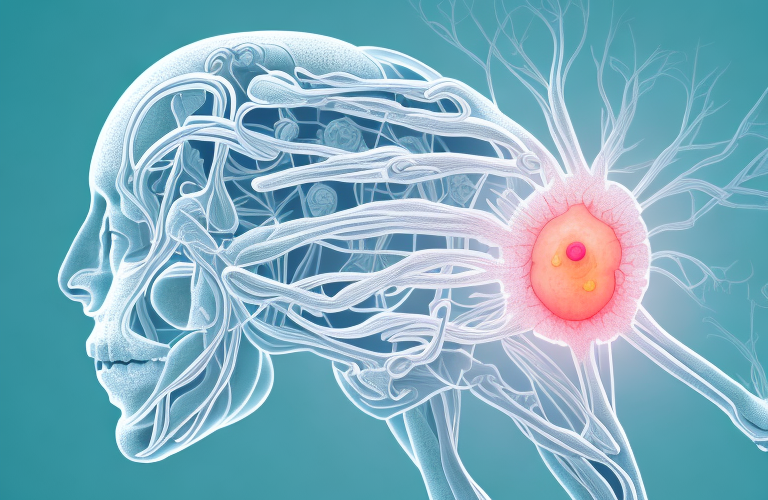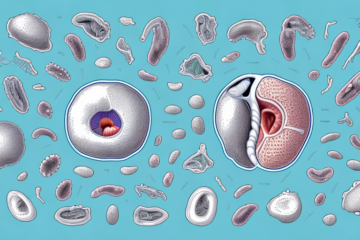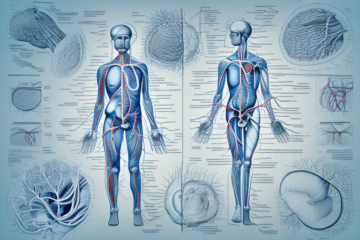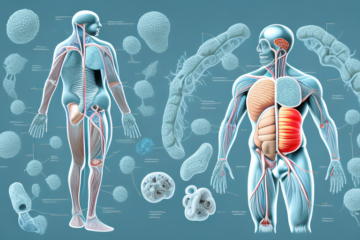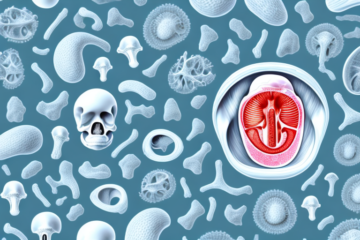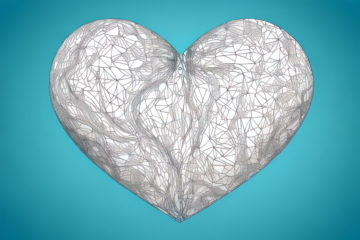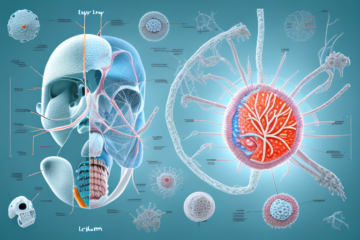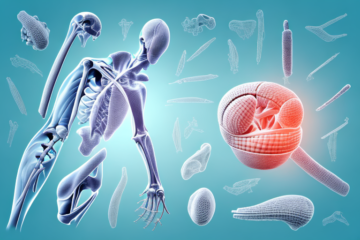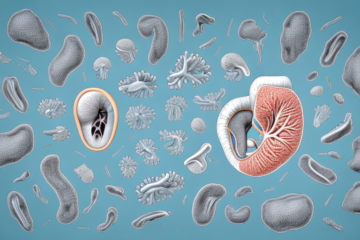Vestigial organs are a fascinating aspect of our anatomical evolution. They are organs that have lost their original function over time, and now serve no purpose or a diminished function in the anatomy of humans and animals. In this article, we’ll be exploring the definition, anatomy, examples, evolutionary theory, controversy, health implications, future implications, and cultural significance of vestigial organs.
The Definition of Vestigial Organs
Vestigial organs are organs that are present in an organism but are no longer necessary for that organism’s survival. They may have had a function in the past, but over time, due to evolutionary changes, the function of the organ has become obsolete or significantly reduced. Vestigial organs in humans and animals are often studied for clues to our evolutionary past and the roles they once played.
One example of a vestigial organ in humans is the appendix. While it may have had a function in our evolutionary past, it is no longer necessary for our survival and can even cause health problems if it becomes inflamed. Another example is the coccyx, or tailbone, which is a remnant of the tail that our primate ancestors had.
Interestingly, vestigial organs are not limited to just animals. Plants can also have vestigial structures, such as the tiny leaves found on some cacti that no longer serve a purpose in photosynthesis. Studying vestigial organs can provide insight into the evolutionary history of a species and how it has adapted over time.
Examples of Vestigial Organs in Humans and Animals
Examples of vestigial organs in humans include the appendix, wisdom teeth, and the coccyx or tailbone. In animals, the appendix is often vestigial, and some snakes have vestigial hind limbs. In some fish, pelvic fins have become vestigial due to evolutionary adaptations to their aquatic habitat.
Another example of a vestigial organ in humans is the ear muscle called the auricularis anterior. This muscle was once used by our primate ancestors to move their ears in order to better detect sounds and communicate with each other. However, over time, humans have lost the ability to move their ears in this way, rendering the auricularis anterior muscle vestigial.
The Evolutionary Theory Behind Vestigial Organs
The theory behind vestigial organs is rooted in the idea of natural selection. As species evolved, traits that were no longer useful were eventually eliminated from the population. Vestigial organs are a result of this evolutionary process where organs that once had a purpose lose their function but remain in the body.
One example of a vestigial organ in humans is the appendix. While it may have had a purpose in our evolutionary past, it no longer serves a function in our digestive system. However, it can still become inflamed and cause health issues.
Interestingly, vestigial organs can also be found in other animals. For example, some species of snakes have vestigial legs, which are remnants of their evolutionary past when their ancestors had legs. These legs no longer serve a purpose in the snake’s current environment, but they remain in their genetic makeup.
The Controversy Surrounding Vestigial Organs
While the concept of vestigial organs has been extensively studied and accepted as a scientific phenomenon, there are still controversies surrounding some organs. Some experts argue that some organs may have lost their function due to modern lifestyles, and they may still serve a purpose in certain circumstances. Additionally, some argue that certain organs may be vestigial in some populations but not others, indicating that the vestigiality of some organs may not be universal.
Another controversy surrounding vestigial organs is the idea that they may not actually be vestigial at all. Some argue that these organs may have functions that are not yet fully understood or discovered. For example, the appendix was once thought to be a useless remnant of evolution, but recent studies suggest that it may play a role in the immune system. This raises the question of whether other organs labeled as vestigial may also have undiscovered functions.
Vestigial Organs and Human Health
Even though vestigial organs are no longer essential for our survival, they can still have health implications. The appendix, for example, can become inflamed and infected, leading to a condition called appendicitis that requires surgical removal. Wisdom teeth can become impacted and cause discomfort or infection, leading to their extraction. The coccyx can also become injured, causing pain and discomfort in the lower back region.
However, recent studies have shown that some vestigial organs may actually have a purpose in the human body. The tonsils, once thought to be useless, are now known to play a role in the immune system by helping to fight off infections. Similarly, the coccyx, or tailbone, may serve as an anchor point for muscles and ligaments in the pelvic region.
Furthermore, the study of vestigial organs can provide insight into human evolution and the history of our species. By examining these organs and their functions in other animals, scientists can better understand how humans have evolved over time and how our bodies have adapted to changing environments and lifestyles.
Vestigial Organs and the Future of Human Evolution
While vestigial organs might not have a role in our survival, they could still play a role in our future evolution. As our lifestyles and environments continue to change, some vestigial organs may become functional again, or new vestigial organs may develop.
For example, the appendix, which was once thought to be a useless organ, is now believed to play a role in our immune system. As we continue to evolve, it’s possible that other vestigial organs, such as the coccyx or wisdom teeth, may also develop new functions or become more important for our survival.
The Cultural Significance of Vestigial Organs
Aside from their scientific significance, vestigial organs also hold cultural importance. They have been used as symbols and metaphors in various cultures throughout history, such as the tailbone representing our ancestral connection to primates in some creation myths. Additionally, some cultures have used certain organs in traditional medicine, despite their vestigiality.
In some cultures, vestigial organs have also been associated with spiritual beliefs. For example, the appendix has been considered a “spiritual organ” in some Native American cultures, believed to hold a person’s spiritual essence. Similarly, the tonsils have been seen as a source of spiritual energy in some Eastern cultures, and their removal is believed to have negative spiritual consequences.
How to Identify a Vestigial Organ
The identification of a vestigial organ can be determined by a few criteria. First, the organ must lack a significant function or a function altogether. It must also have remnants of the ancestral organ or structure that it once was. Additionally, the organ must have vestigial counterparts or homologous organs in related species.
One example of a vestigial organ in humans is the appendix. While it may have had a function in our evolutionary past, it no longer serves a significant purpose in our digestive system. The appendix also has remnants of its ancestral function as a larger cecum, which is still present in many herbivorous animals. Furthermore, other primates also have vestigial appendices, indicating that it is a homologous organ.
The Role of Genetics in the Development of Vestigial Organs
Genetics plays a significant role in the development of vestigial organs. Some genes that were once necessary for the development and function of ancestral organs may now be obsolete but still persist in our genome. Mutations in these genes can lead to the development of vestigial structures or the complete loss of the organ throughout generations.
However, it is important to note that the development of vestigial organs is not solely determined by genetics. Environmental factors can also play a role in the expression of these genes and the development of vestigial structures. For example, if an organism no longer needs a certain organ due to changes in its environment, the gene responsible for that organ may become inactive over time. This can lead to the eventual loss of the organ in future generations.
The Debate Over Removing Vestigial Organs Surgically
There has been a debate surrounding the surgical removal of vestigial organs such as the appendix, tonsils, and wisdom teeth. While they may not have a significant function, some argue that they could still have an evolutionary purpose and that we should not remove them unless necessary. Others argue that removing them can prevent potential health issues and improve quality of life.
However, recent studies have shown that the removal of these organs may have some negative effects on the body. For example, the removal of the appendix has been linked to an increased risk of developing certain digestive disorders. Similarly, the removal of tonsils and adenoids has been associated with an increased risk of respiratory infections. Therefore, it is important to carefully consider the potential risks and benefits before deciding to undergo surgery to remove these vestigial organs.
The Connection Between Vestigial Organs and Other Medical Conditions
Research has suggested that some medical conditions could be related to vestigial organs. For instance, some studies have shown that the removal of the appendix can increase the risk of developing certain gastrointestinal conditions later in life. However, more research is needed to understand these connections fully.
Another example of a vestigial organ that may be linked to medical conditions is the coccyx, or tailbone. While it serves no functional purpose in humans, it can still be the source of pain and discomfort for some individuals. In rare cases, the coccyx may even become infected or develop a tumor.
Furthermore, recent studies have suggested a possible connection between the presence of vestigial organs and certain autoimmune disorders. It is believed that these organs may trigger an immune response in the body, leading to inflammation and other symptoms associated with these conditions. However, more research is needed to confirm this hypothesis and determine the exact mechanisms behind this relationship.
The Impact of Lifestyle and Environment on the Development of Vestigial Organs
As the human environment and lifestyles change, new or dormant vestigial organs may develop. For instance, as humans become more sedentary, certain muscles may become vestigial, leading to health implications such as lower back pain. Additionally, changes in diet can impact the development of certain organs, such as wisdom teeth due to a shift in chewing patterns.
Furthermore, environmental factors such as pollution and exposure to toxins can also impact the development of vestigial organs. For example, studies have shown that exposure to certain chemicals can lead to the development of vestigial organs in fish and other aquatic animals. It is possible that similar effects could occur in humans, although more research is needed to fully understand the impact of environmental factors on vestigial organ development.
The Debate Over the Existence of Vestigial Structures in Humans
While vestigial organs have been extensively studied and understood in the scientific community, there is still debate over the existence of certain vestigial structures in the human anatomy. Some argue that some structures that have been previously classified as vestigial may have a purpose that we do not understand yet.
One example of a structure that is still debated is the appendix. While it was once thought to be a vestigial organ with no function, recent studies have suggested that it may play a role in the immune system. However, others argue that the appendix is still a vestigial structure, as its function can be performed by other organs in the body.
Another structure that is still under debate is the coccyx, or tailbone. While it is a remnant of our evolutionary past, some argue that it still serves a purpose in supporting the muscles and ligaments of the pelvic floor. Others argue that it is a vestigial structure with no real function in modern humans.
Discoveries and Advances in the Study of Vestigial Structures
The study of vestigial structures continues to bring exciting discoveries and advances in the field of biology. For instance, researchers have discovered new vestigial structures that were previously unknown in the anatomy of some animals. Studies in evolution and genetics have also shed more light on the origins and development of these structures.
Overall, the study of vestigial organs has provided significant insights into our evolutionary past and continues to contribute to our understanding of human anatomy and biology. While they may no longer serve a significant function, they hold a significant place in our cultural and scientific history, and they could still have an impact on our future evolution.
Recent studies have also shown that vestigial structures can have a role in the development of certain diseases. For example, the appendix, which was once thought to be a useless remnant, has been found to play a role in the immune system and may even have a protective effect against certain infections. Similarly, the presence of vestigial structures in the human body, such as the tailbone, can sometimes lead to medical conditions such as coccydynia, a painful inflammation of the tailbone.

